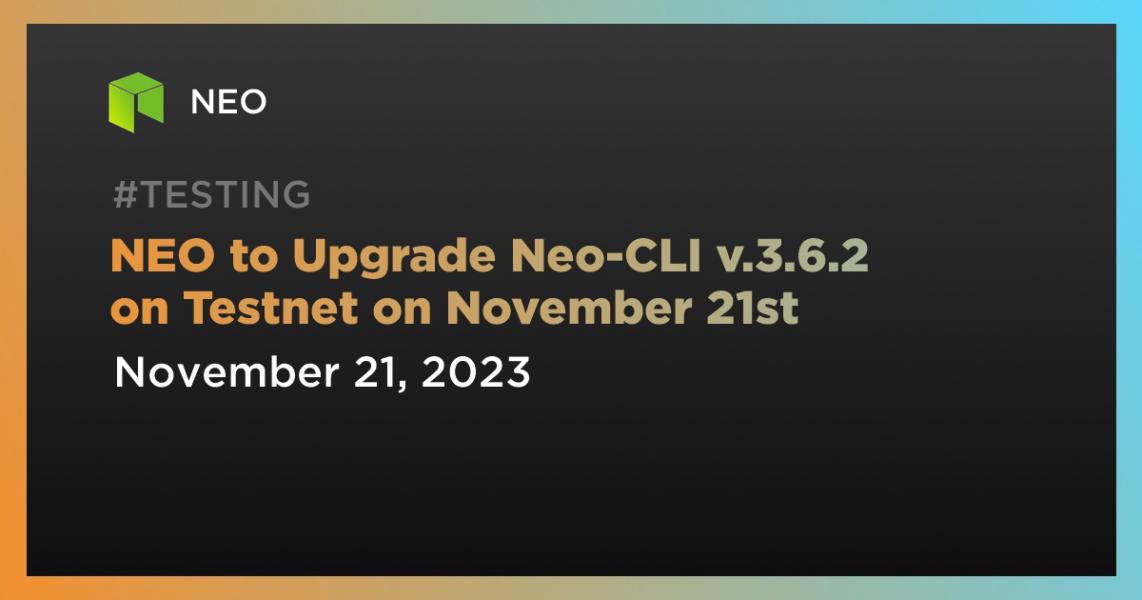NEO to Upgrade Neo-CLI v.3.6.2 on Testnet on November 21st

NEO will release Neo-CLI v.3.6.2 on testnet on November 21st. The new version brings with it a host of improvements and new features, all aimed at enhancing the overall performance and functionality of the NEO network.
Refer to the official tweet by NEO:
Neo Smart Economy@Neo_BlockchainNov 20, 2023🛠ï¸ #Neo-CLI v3.6.2 has been released.
TestNet will be upgraded on Nov 21st. MainNet will be upgraded on Dec 4th.
Dive into the details of the developments below.https://t.co/ol31f78BXl
NEO Info
NEO is a blockchain platform and cryptocurrency designed to build a scalable network of decentralized applications. The base asset of the NEO blockchain is the non-divisible NEO token, which generates GAS tokens. These GAS tokens, which are divisible, can be used to pay for transaction fees to utilize the network. The NEO blockchain is often referred to as China's response to Ethereum because of its similar use of smart contracts.
NEO was founded in 2014 by Da Hongfei and Erik Zhang under the name AntShares, which later rebranded to NEO in June 2017. It supports common programming languages like JavaScript and Python, which means developers can develop smart contracts without learning a unique language, unlike Ethereum which requires learning its proprietary language, Solidity. This feature was created to attract a broader developer audience to build on their platform.
One of the major differences between NEO and other smart contract-enabled blockchains is its consensus mechanism. Rather than using proof-of-work or proof-of-stake, NEO uses a protocol known as delegated Byzantine Fault Tolerance (dBFT). This consensus protocol is designed to provide a system that can efficiently reach consensus without requiring intensive energy use, and it also supports up to 10,000 transactions per second (TPS).
NEO also implements a digital identity protocol to enable the creation of identity information of organizations, individuals, and entities in electronic form. These identities are usable via multi-factor authentication mechanisms such as facial recognition, fingerprints, voice recognition, and SMS.
In conclusion, NEO aims to automate the management of digital assets through the use of smart contracts and to create a "smart economy" with a distributed network. It's an ambitious project that has drawn attention from both China and the international community for its potential to transform various industries, from finance to supply chain management and more.